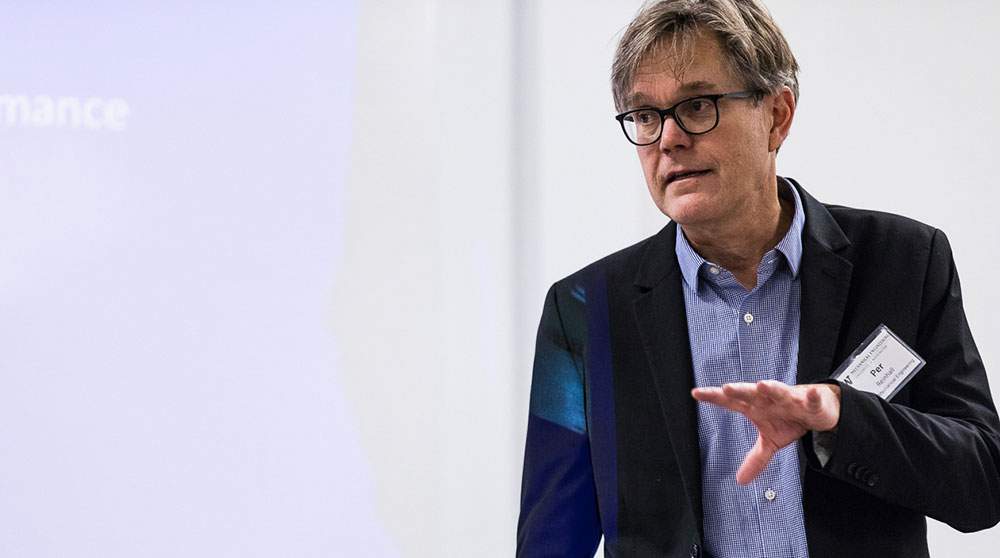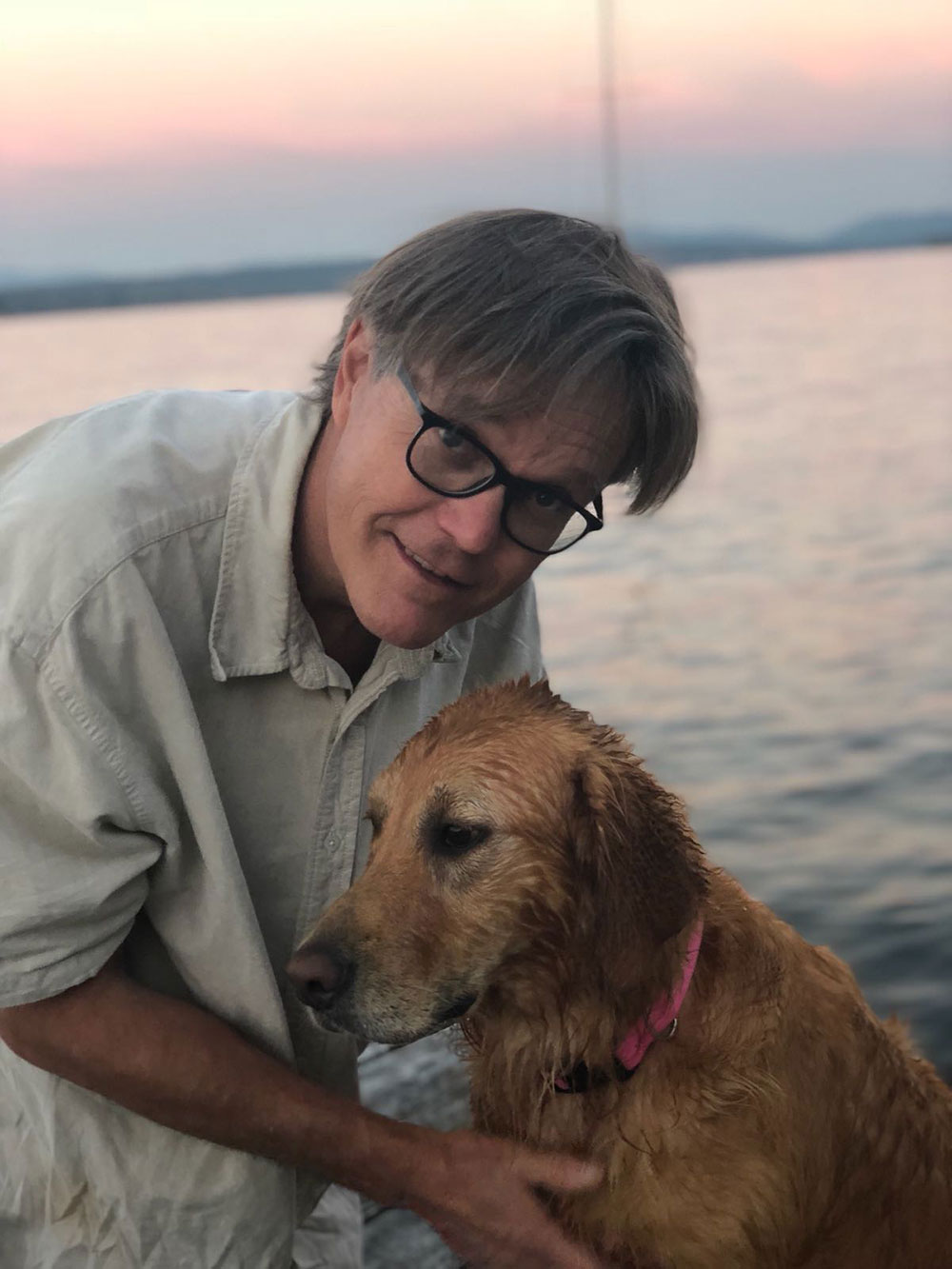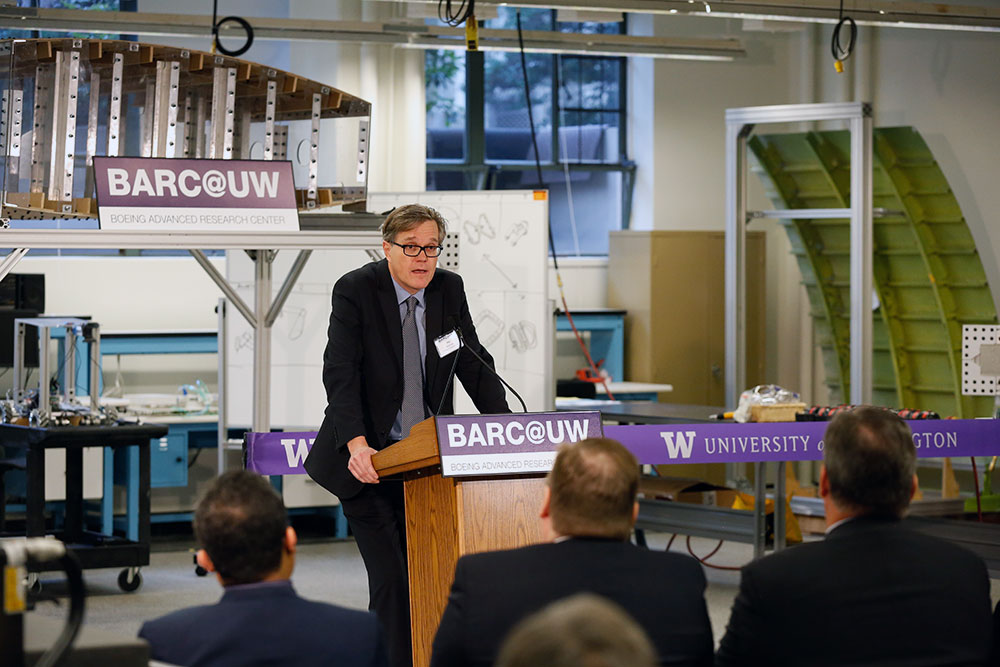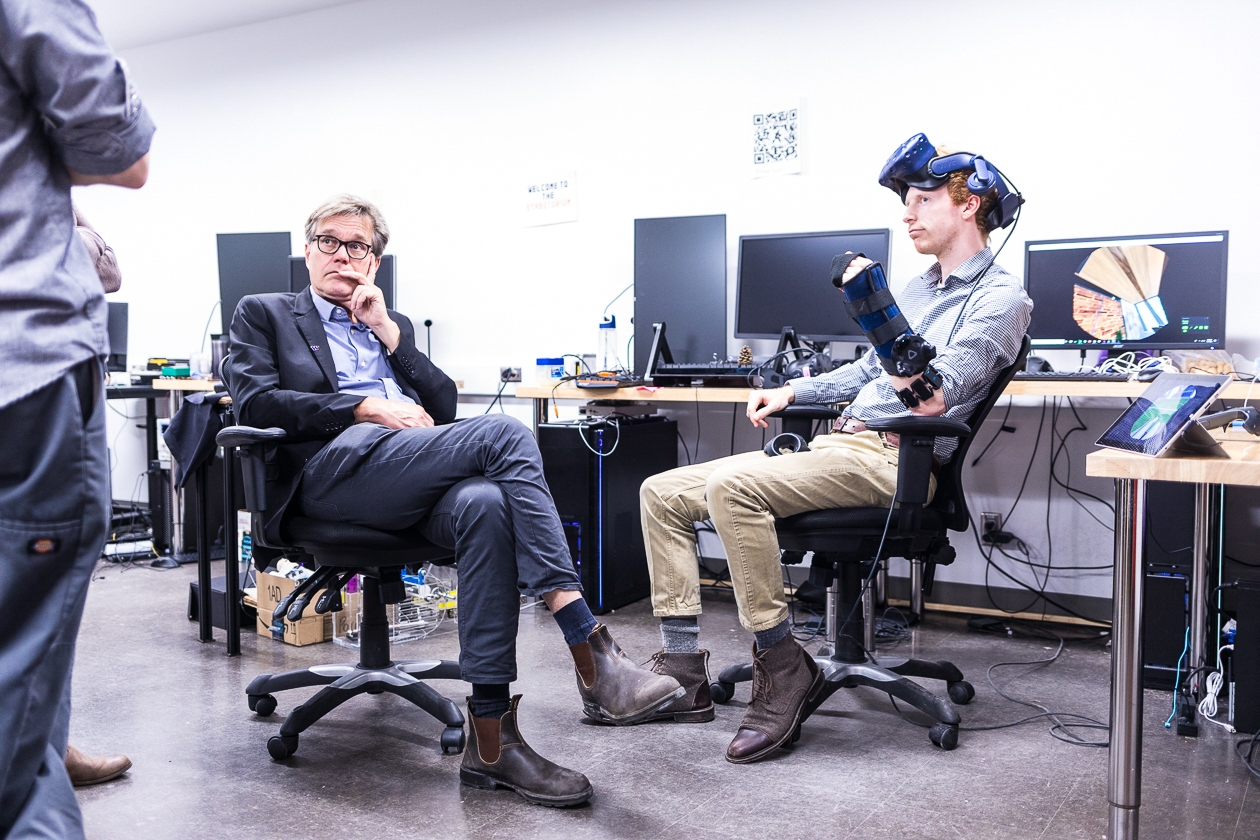
Per Reinhall has served as chair of the UW Department of Mechanical Engineering since 2010. Photo by Mark Stone / University of Washington
The defining events of the 2010s are still up for debate, but in the UW Department of Mechanical Engineering, there’s little question that it will be the Reinhall decade. Per Reinhall has served as the chair of the ME department since Autumn 2010. At the end of this year Reinhall, whose first name is pronounced “pair,” will conclude his second term as “Chair Per” and return to research and teaching.

Per Reinhall with his golden retriever Molly. Photo courtesy of Per Reinhall
A native of Sweden and UW ME alumnus himself (BSME ’77), Reinhall’s research discoveries have led to over 170 papers, 26 patents and three startup ventures. His research focuses in biomechanics and biomedical devices, as well as acoustics, noise and vibration control, manufacturing, and human-robot interactions. Reinhall has helped establish several major collaborative initiatives in the department, including the Engineering Innovation in Health (EIH) program and the Boeing Advanced Research Center (BARC), for which he also served as director. He is a Presidential Entrepreneurial Faculty Fellow, a member of the Washington State Academy of Sciences, the recipient of the 2016 UW Medicine Inventor of the Year award and the inventor of one of Time Magazine’s Top 25 Inventions of 2019.
ME communications manager Andy Freeberg spoke with Reinhall about his time leading the department and what stands out to him from his decade as chair.
What were your goals for ME when you first became chair?
When I became chair I’d already been in ME for over 25 years, so I knew the department well. I liked the department culture a lot – it was wonderfully collegial and geared toward excellent research and teaching, but I knew we could improve its standing both at UW and against peer institutions. So when I took the role I came in with a lot of ideas and energy to take on new initiatives.
First, I wanted to change the way the department looked to outsiders. There was this idea that mechanical engineering was just that, mechanical, only dealing with traditional mechanical systems consisting of nuts, bolts, gears and the like. I wanted to make it clear that ME addresses all the grand challenges of today and the future. Even at that time we were doing diverse research – working on medical devices, 3D printing, renewable energy, advanced robotics and all kinds of exciting stuff, but the word wasn’t getting out. My message was, and still is, that if you want to change society, ME is the way to go.
I also wanted to encourage ME faculty to become more proactive about leading programs and initiatives. I felt that if we could increase our presence and improve our standing in the college it’d benefit us in a lot of ways.
Of all that’s been accomplished in the past 10 years, what do you see as having the most impact?
Everything we’ve accomplished has been a team effort. So to me, the most important thing has been all of the excellent people who have joined the department. Over half of our current faculty have joined since I became chair and I’m very, very proud of the caliber of those hires. They’ve brought fresh ideas and energy and are great leaders and collaborators.
We’ve also found ways to make a bigger impact by building infrastructure around our key teams. For example, with EIH we’ve cemented our ties to UW Medicine and built a program that provides a top-notch educational experience to students. Nearly half of our core faculty now have ties to health-related research, and I’m proud of the game-changing innovations we’ve been a part of in that area.
BARC is another good example. It’s led to award-winning research, but also helps us keep a finger on the pulse of industry. We learn what research is most needed to support commercial sectors and, in turn, our students graduate better prepared to go into engineering careers. The new PACCAR Advanced Research Center will do the same.

Reinhall, shown here speaking at the ribbon cutting for the Boeing Advanced Research Center in 2015, has helped many new initiatives grow and flourish during his time as ME chair. Photo by Brian DalBalcon
How has the department changed?
I would like to think we’ve held on to ME’s collegial and positive atmosphere while growing much more interdisciplinary and problem-focused than we once were. Compared to a decade ago, we’re doing a better job stepping up to tackle society’s toughest challenges. This has changed the way we’re viewed around the university and made more units want to work with us. Our faculty are core contributors to major UW centers like the Molecular Engineering & Sciences Institute, the Institute for Nano-Engineered Systems and the Clean Energy Institute. This leads to greater opportunities to do impactful work and the cycle continues.
The other big change I’ve seen is in the quality of our hands-on educational experience. When I first started only the Formula Motorsports student team was organized and competing at a national level. As a department we’ve come to see how valuable these clubs and competitions are for giving our students a chance to apply and enhance their engineering and business skills. Today we have seven well-run and nationally recognized teams and numerous prizes from the UW Buerk Center for Entrepreneurship competitions. The students on these teams are among our most sought-after by employers when they graduate.

Reinhall at the opening of the Amplifying Movement and Performance Laboratory in 2018. Photo by Mark Stone / University of Washington
What have been your favorite parts of the job?
More than anything I enjoy talking with staff and going out to coffee with faculty to hear about what they’ve been doing. I get a lot of energy from working with all the people in ME who really care, who want to keep improving the department and serving the students. Those kinds of personal interactions have been most fun for me. It’s also why the pandemic has been so hard this year.
I’ve also tremendously enjoyed getting to know alumni and donors. Talking to them and seeing how much the department means to them is humbling. I’ve always been so grateful to donors, but I had no clue before I became chair just how devoted our alumni are and how much they care about supporting our students.
Where do you see the department headed in the next 10 years?
We’re going to have to grow. That’s the only way we can better serve students and the state. That means more faculty, but it also means more space for experiential education.
And we need to continue to be more and more diverse, collaborative and interdisciplinary. In my career I’ve seen how mechanical engineers provide an advantage across so many pursuits and heard repeatedly from industry how valuable mechanical engineers are. I’m looking forward to the construction of the Interdisciplinary Engineering Building because it will give us more space and upgraded facilities, both of which are badly needed, and will allow us to make more connections to colleagues and classmates in other units.
What are your plans once your term comes to a close?
The short answer is that I don’t know! I do want to get back to research. I want to work with more faculty across the UW. I have a few startups that I want to spend more time nurturing and spend more time with my family.
Originally published December 1, 2020